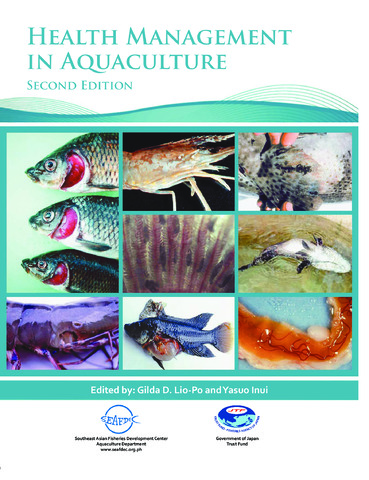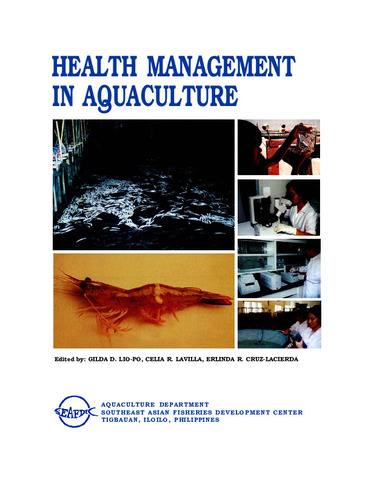Experiments on virulence dose and portals of entry for Aeromonas hydrophila in walking catfish
| dc.contributor.author | Lio-Po, Gilda D. | |
| dc.contributor.author | Albright, Lawrence J. | |
| dc.contributor.author | Leaño, Eduardo M. | |
| dc.date.accessioned | 2013-04-10T04:06:37Z | |
| dc.date.available | 2013-04-10T04:06:37Z | |
| dc.date.issued | 1996 | |
| dc.identifier.citation | Lio-Po, G. D., Albright, L. J., & Leaño, E. M. (1996). Experiments on virulence dose and portals of entry for Aeromonas hydrophila in walking catfish. Journal of Aquatic Animal Health, 8(4), 340–343. | en |
| dc.identifier.issn | 0899-7659 | |
| dc.identifier.uri | http://hdl.handle.net/10862/1563 | |
| dc.description.abstract | Aeromonas hydrophila, isolated from chevron snakehead Ophicephalus (=Channa) striatus affected with epizootic ulcerative syndrome (EUS), was injected intramuscularly into healthy walking catfish Clarias batrachus at varying 10-fold serial dilutions from 108 to 0 colony-forming units (cfu) per fish. Only 106 or more cfu/mL induced dermomuscular lesions. Initial healing of lesions was observed by day 7 but complete healing was not apparent until day 16. Experiments were also conducted on possible portals of entry of A. hydrophila into walking catfish: Intramuscular (IM) injection, gastric gavage, fish food, and immersion of injured fish in rearing water inoculated with the test bacteria. Injuries were caused by skin or muscle cut, dermal scraping or incision, fish bite, and cohabitation of fish with golden snails Ampullarius sp. Only IM injection treatment induced dermomuscular pathology in the test catfish. This suggests that a localization of A. hydrophila to a level of 106 cfu/mL in the musculature must be established for dermal lesions to develop. | en |
| dc.language.iso | en | en |
| dc.publisher | American Fisheries Society | en |
| dc.subject | Aeromonas hydrophila | en |
| dc.subject | Clarias batrachus | en |
| dc.subject | Channa striatus | en |
| dc.title | Experiments on virulence dose and portals of entry for Aeromonas hydrophila in walking catfish | en |
| dc.type | Article | en |
| dc.identifier.doi | 10.1577/1548-8667(1996)008<0340:EOVDAP>2.3.CO;2 | |
| dc.citation.volume | 8 | |
| dc.citation.issue | 4 | |
| dc.citation.spage | 340 | |
| dc.citation.epage | 343 | |
| dc.citation.journalTitle | Journal of Aquatic Animal Health | en |
| seafdecaqd.library.callnumber | VF SJ 0696 | |
| seafdecaqd.databank.controlnumber | 1996-36 | |
| dc.subject.asfa | bacterial diseases | en |
| dc.subject.asfa | disease transmission | en |
| dc.subject.asfa | fish diseases | en |
| dc.subject.asfa | damage | en |
| dc.subject.asfa | lesions | en |
| dc.subject.asfa | pathogenic bacteria | en |
| dc.subject.asfa | virulence | en |
| dc.subject.scientificName | Ophicephalus striatus | |
| dc.subject.scientificName | Channa striata |
Files in this item
| Files | Size | Format | View |
|---|---|---|---|
|
There are no files associated with this item. |
|||
This item appears in the following Collection(s)
-
Journal Articles [1258]
These papers were contributed by Department staff to various national and international journals.



